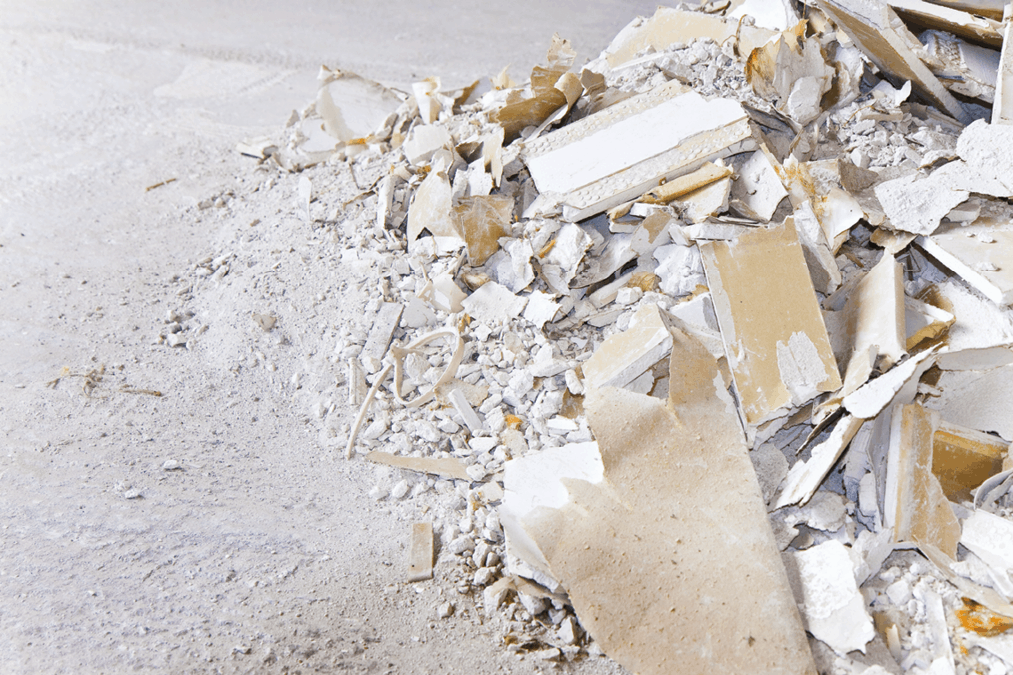Regulations complicate C&D recycling
Regulations complicate C&D recycling
<![CDATA[
As the construction and demolition (C&D) recycling industry grapples with shrinking end markets and a decrease in volumes caused by the coronavirus pandemic, recyclers are now facing another battle with state regulations potentially posing a threat to their operations.
An example of this can be seen in New Jersey’s recent environmental justice bill (S-232) signed by Gov. Phil Murphy on Sept. 18, which requires the state Department of Environmental Protection (NJDEP) to evaluate the environmental and public health stressors certain facilities may pose on overburdened communities when reviewing certain permit applications.
These facilities can include transfer stations or solid waste facilities, recycling facilities that receive at least 100 tons of recyclable material per day, scrap metal facilities, landfills, medical waste incinerators and more.
According to William Turley, executive director for the Construction & Demolition Recycling Association (CDRA), this means any of the aforementioned facility proposals will require the preparation of an Environmental and Health Impact Statement (EHIS) and public hearings in the community before operators are allowed to submit a permit application to the state.
RECYCLING ROADBLOCKS
These requirements not only equate to more regulatory hurdles for operators, but increased costs, as well.
“An EHIS can cost between $30,000 to $50,000, which is an investment that virtually no one will make before getting to square one of the NJDEP permitting process. Ironically, preparation of an EHIS is explicitly excluded from being required for recycling facilities by statute, so this is a huge reversal of public policy,” Turley says.
In addition, perhaps the biggest impediment of the bill relates to Title V major air pollution facilities, says Turley. According to the U.S. Environmental Protection Agency (EPA), a Title V major source is a facility that emits, or has the potential to emit (PTE), any criteria pollutant or hazardous air pollutant (HAP) at levels equal to or greater than the Major Source Thresholds (MST).
As stated in the bill, upon the renewal of an existing facility’s major source permit, all Title V facilities will also need to prepare an EHIS and subject the project to public hearings in the facility’s host community.
“There are 260 Title V facilities in New Jersey. They represent all the major pieces of environmental infrastructure in the state, such as landfills, mass burn incinerators, every power plant and generating station, all wastewater treatment plants, most colleges and universities, etc.,” Turley says. “While this [legislation] is for Title V now, what is to stop the state from expanding to other levels of facilities in the future?”
The bill has been met with direct opposition from businesses and stakeholders, with many expressing that the legislation is vague with unclear impacts and directly targets waste and recycling facilities.
In July, the Institute of Scrap Recycling Industries (ISRI) submitted a written testimony to the New Jersey Assembly Environment and Solid Waste Committee in opposition to the bill.
In its statement, Jarred Dorfman, president of ISRI’s New Jersey chapter, offered support of the concept of responsible environmental justice legislation, but noted ISRI is concerned that, without amendments, S-232 will harm New Jersey and its recycling goals by imposing onerous restrictions and costs on recycling facilities that need to renew their NJDEP permits.
“For reasons not provided, the legislation specifically calls out recycling and scrap metal facilities while not citing other common industrial and commercial operations,” the testimony states. “Most importantly, by targeting recycling while at the same time promoting the growth of recycling through simultaneous efforts in the New Jersey legislature, such as with S-2515 (which established recycled content requirements for various takeout packaging), the legislature is creating an impossible situation for the recycling industry in the state.”
ISRI also warned that the bill could inhibit facility operators looking to invest in new, environmentally friendly equipment, expand operations, or even develop new facilities that incorporate state-of-the-art technology, including for pollution abatement.
Turley says the bill has the potential to effectively shut down any new environmental infrastructure development in the future at a time when the state economy has taken a beating from COVID-19.
“We agree that no community should bear a disproportionate share of the adverse environmental and public health consequences that accompany a state’s economic growth, and those communities [should] have a meaningful opportunity to participate in the permitting process, but this bill will give them the authority to put companies out of business too easily,” he adds.

ACROSS THE NATION
Similar strains on the C&D recycling industry can be felt in California, with a 1994 California Supreme Court ruling leaving lasting effects on some of the recycling facilities operating in the state.
The landmark ruling between the cities of Rancho Mirage and Palm Springs, and their franchise hauler, Waste Management of the Desert, redefined what materials may lawfully be within a public entity grant of an exclusive solid waste franchise, thus establishing a “fee for service” test of whether material is solid waste or not.
According to Brock Hill, owner of San Jose-based Premier Recycle Co., the ruling “changed the definition of what constituted solid waste and what constituted recycling” in the state of California.
“What that bill tried to do was put the intent of the California solid waste collection industry and infrastructure on reducing the amount of landfill waste,” he says. “Now, when the Supreme Court case in California was ruled on, what they did was they imposed something called a ‘fee for service’ tax. So, that means if a piece of material isn’t monetarily worth anything, that then becomes solid waste and is subject to the exclusive garbage hauling franchise [of each municipality].”
According to the Northern California Recycling Association (NCRA), this left C&D recyclers stuck. Since the legislature had declared landfilling harmful to the environment, the association says the grant of a franchise inclusive of mixed C&D could be said to result in more landfilling, and therefore, environmental review under the California Environmental Quality Act (CEQA) would be required.
Premier Recycling, which is a mixed C&D collector with a fully permitted recycling facility in San Jose, experienced the consequences of this ruling firsthand. While San Jose allows open competition for C&D, many of the surrounding cities like Sunnyvale and Mountain View have exclusive franchises that cover C&D.
“Our company would love to expand, but there is no guarantee that when we set up another facility elsewhere, that we’ll still have access to the same material,” Hill says. “For instance, let’s say we wanted to set up a sorting facility in the city of Oakland. Five years from now, we don’t have a guarantee that the city of Oakland won’t become an exclusive franchise city, and we may not get the contract for that material. … It’s a big gamble for a company that wants to set up a sorting facility with no guarantee of access to the material.”
Although the inclusion of C&D materials in municipal waste franchises can be seen across the state, cities like San Francisco are moving in the opposite direction.
This is in part due to a 1932 ordinance that permanently awarded the right to collect the city’s garbage to individuals or mom-and-pop operations that held the city’s 97 existing route permits, according to The New York Times.
In short order, the holders of all of the permits banded together. The permits became assets of a company, originally jointly owned by the 97 permit-holders, and that company grew into what is now Recology.
“[San Francisco] is currently the only city I know of where their citizens voted that they can’t have an exclusive city franchise. So, because of that constraint on the city government, they’ve had to be creative in how they achieve recycling rates, so they’ve set up a myriad of programs that I think are working very successfully for the city of San Francisco versus exclusively franchised cities,” says Hill.
This article originally appeared in the Nov./Dec. issue of Construction & Demolition Recycling magazine. The author is the assistant editor for Construction & Demolition Recycling magazine and can be reached at [email protected].
]]>
Source: Recycling Today
Regulations complicate C&D recycling
<

